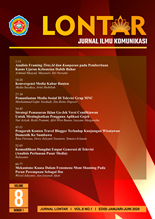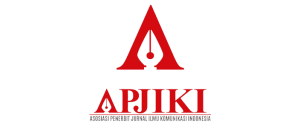Konvergensi Media Kabar Banten
DOI:
https://doi.org/10.30656/lontar.v8i1.2217Abstract
Technological progress has made the Kabar Banten Group converge, which is to unite the Kabar Banten Daily with internet technology, thus creating a new entity namely Kabarbanten.com, Kabarbanten TV, YouTube channel and Istagram. The move was taken to face business competition, efficiency, and adapt to the digital industry. The research objective is to find out how transformation and convergence are carried out and how changes in the mechanism of editorial work, especially the newsroom model, occur. The study uses a qualitative approach with case study methods, data collection techniques with interviews and documentation. Informants select purposively namely editor in chief, journalists, and Web Admin. The results showed a convergence model in the Kabar Banten newsroom is a newsroom 3.0 model where the process of gathering news and news writing is done by one journalist to be distributed to all platforms of the Daily Kabar Banten, Kabarbanten.com, Kabar Banten TV and social media. The newsroom model is to streamline human resources and summarize the mechanism of work. Kabar Banten applies the five stages continuum convergence stage, namely cross promotion, cloning, coopetion, content sharing, and full convergence. This is done so that all platforms work together for the existence of the Banten Kabar company
Downloads
Published
Issue
Section
License
By submitting an article to the journal, the author(s) agree to transfer the published article's copyright to the journal, which will act as the publisher. This means the journal will have the right to publish the article in various forms, including reprints. The journal will maintain the publishing rights to the published articles.
In line with the license, authors and third parties (readers, researchers, and others) are allowed to share and adapt the material. In addition, the material must be given appropriate credit, provided with a link to the license, and indicated if changes were made. If authors remix, transform, or build upon the material, authors must distribute their contributions under the same license as the original.






